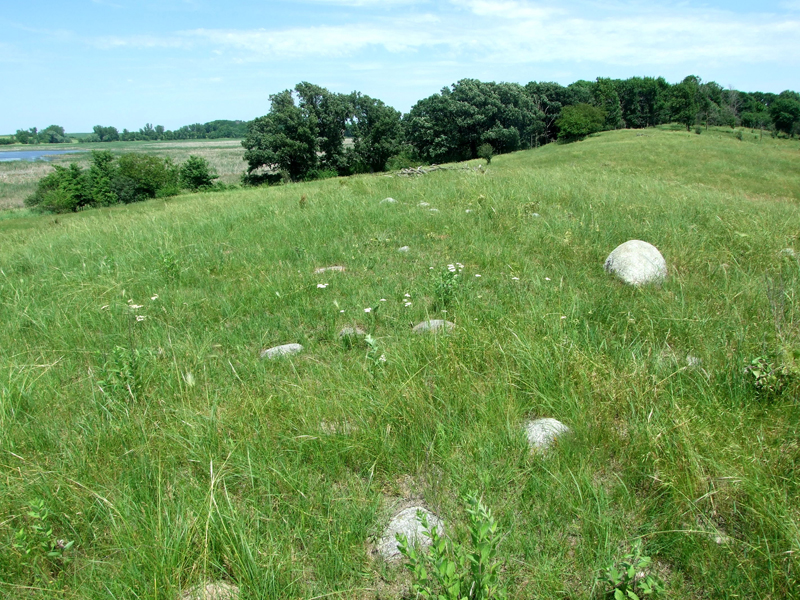
The Des Moines Lobe, also called the Prairie Pothole region of Iowa, is characterized by a gently rolling terrain with depressional wetlands (potholes) and a few deeper natural lakes. This is also the most recently glaciated region in Iowa and was shaped by glaciers 12,000–14,000 years ago (Prior 1991); it extends into portions of several surrounding states. Glacial activity consisted of several surges of glaciers southward from the Wisconsinan ice sheet south to Des Moines; the maximum extents of each surge are defined by morainal ridges throughout the lobe.
The region’s abundant shallow wetlands provide important nesting habitat for many of Iowa’s wetland birds. It is perhaps best known as Iowa’s “duck factory,” a reference to the prevalence of breeding waterfowl relative to other parts of Iowa. Canada Goose, Mallard, and Blue-winged Teal are the most numerous nesting waterfowl; Gadwall, Northern Shoveler, Redhead, and Ruddy Duck are regular in smaller numbers and several other species nest occasionally. Pied-billed Grebe, American and Least bitterns, Virginia Rail, and American Coot are regular breeders on shallow wetlands with emergent vegetation.
These same wetlands also host marsh passerines that include Marsh Wren, Swamp Sparrow, Yellow-headed Blackbird, and Great-tailed Grackle. Red-necked Grebe, Sandhill Crane, and perhaps Wilson’s Phalarope are wetland species that are currently expanding as breeders in this region. The forested edges of wetlands host breeding Black-billed Cuckoo, Willow Flycatcher, Warbling Vireo, and Yellow Warbler while grassland areas host breeding Northern Harrier, Sedge Wren, and Clay-colored, Savannah, and Grasshopper sparrows.